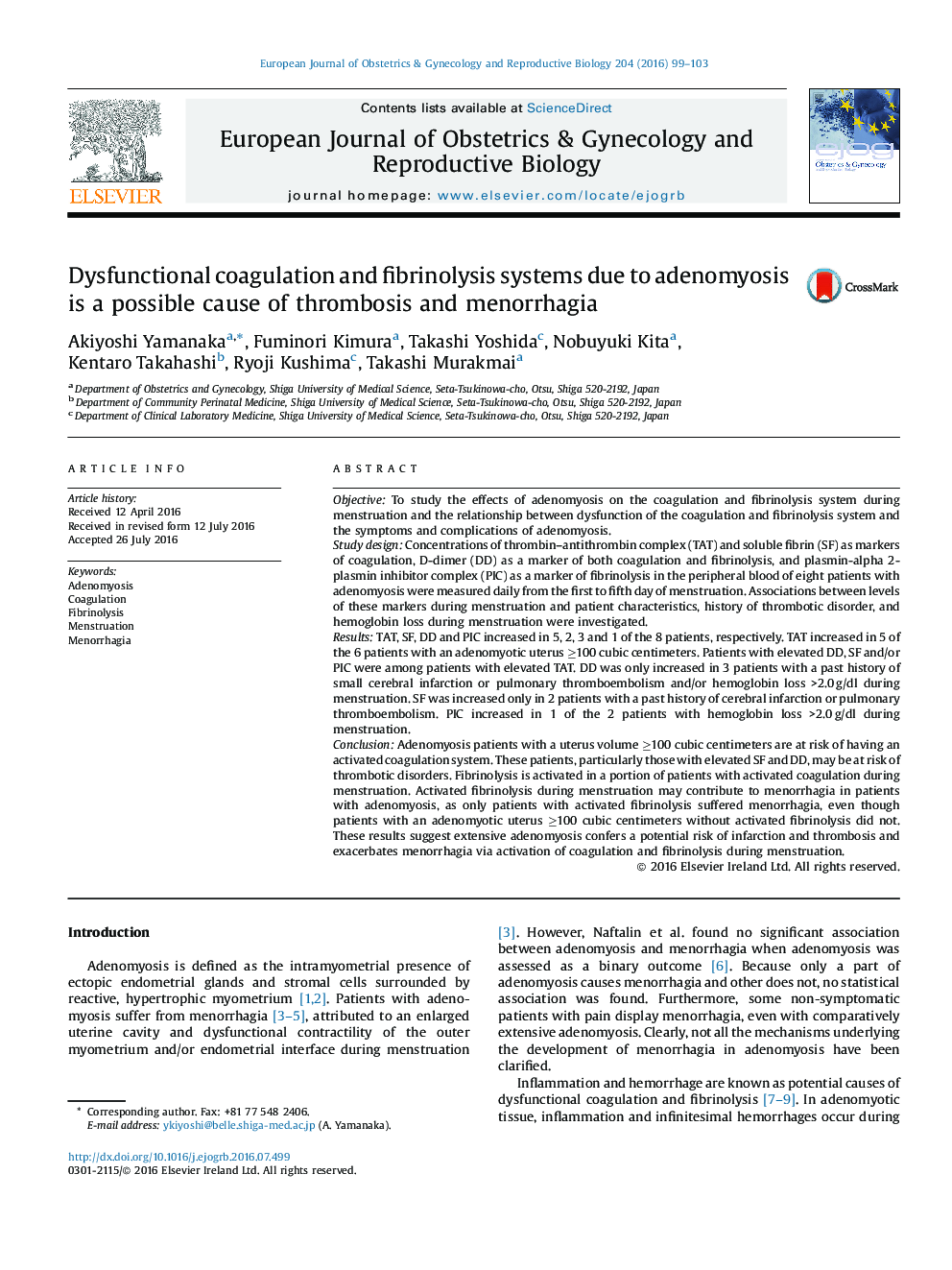| کد مقاله | کد نشریه | سال انتشار | مقاله انگلیسی | نسخه تمام متن |
|---|---|---|---|---|
| 3919268 | 1599777 | 2016 | 5 صفحه PDF | دانلود رایگان |
ObjectiveTo study the effects of adenomyosis on the coagulation and fibrinolysis system during menstruation and the relationship between dysfunction of the coagulation and fibrinolysis system and the symptoms and complications of adenomyosis.Study designConcentrations of thrombin–antithrombin complex (TAT) and soluble fibrin (SF) as markers of coagulation, D-dimer (DD) as a marker of both coagulation and fibrinolysis, and plasmin-alpha 2-plasmin inhibitor complex (PIC) as a marker of fibrinolysis in the peripheral blood of eight patients with adenomyosis were measured daily from the first to fifth day of menstruation. Associations between levels of these markers during menstruation and patient characteristics, history of thrombotic disorder, and hemoglobin loss during menstruation were investigated.ResultsTAT, SF, DD and PIC increased in 5, 2, 3 and 1 of the 8 patients, respectively. TAT increased in 5 of the 6 patients with an adenomyotic uterus ≥100 cubic centimeters. Patients with elevated DD, SF and/or PIC were among patients with elevated TAT. DD was only increased in 3 patients with a past history of small cerebral infarction or pulmonary thromboembolism and/or hemoglobin loss >2.0 g/dl during menstruation. SF was increased only in 2 patients with a past history of cerebral infarction or pulmonary thromboembolism. PIC increased in 1 of the 2 patients with hemoglobin loss >2.0 g/dl during menstruation.ConclusionAdenomyosis patients with a uterus volume ≥100 cubic centimeters are at risk of having an activated coagulation system. These patients, particularly those with elevated SF and DD, may be at risk of thrombotic disorders. Fibrinolysis is activated in a portion of patients with activated coagulation during menstruation. Activated fibrinolysis during menstruation may contribute to menorrhagia in patients with adenomyosis, as only patients with activated fibrinolysis suffered menorrhagia, even though patients with an adenomyotic uterus ≥100 cubic centimeters without activated fibrinolysis did not. These results suggest extensive adenomyosis confers a potential risk of infarction and thrombosis and exacerbates menorrhagia via activation of coagulation and fibrinolysis during menstruation.
Journal: European Journal of Obstetrics & Gynecology and Reproductive Biology - Volume 204, September 2016, Pages 99–103
